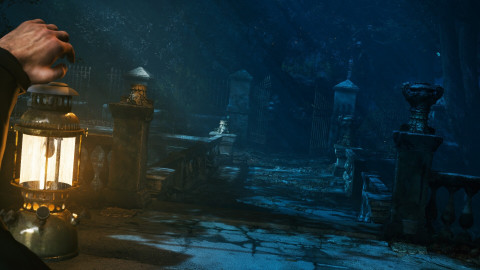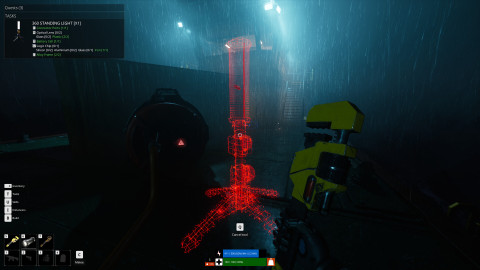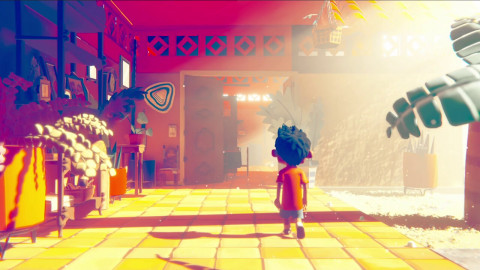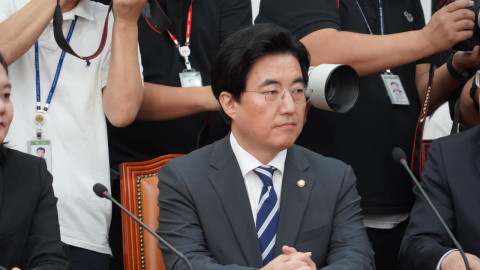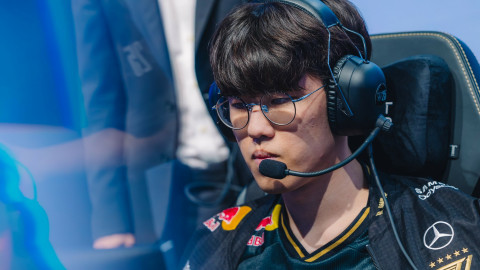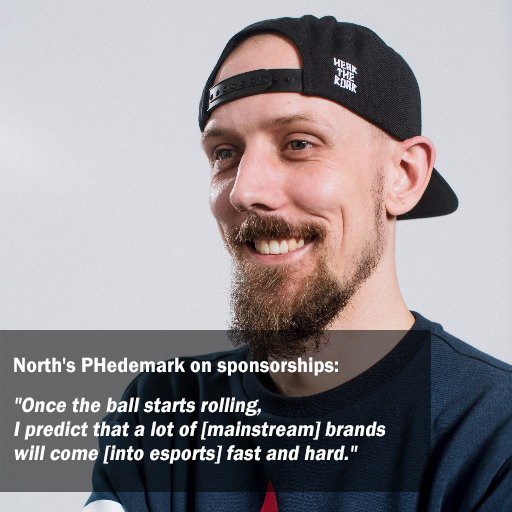
Phillip “PHedemark” Rasmussen is best known within the CS:GO community for his work as a community manager for the Danish teams Astralis and North. However, this is only one part of his responsibilities within those organizations, as he’s also involved in marketing and securing sponsorship deals for the team. Last week, we had the opportunity to ask him a number of questions in regards to the latter two. Hopefully, the answers will lift the curtain at least a little bit and bring some insight to us and our readers about the inner workings of that part of the industry.
Most CS:GO fans came to know of you when you joined Astralis, but you had worked with MYM, Fnatic and Steelseries prior to that. Excluding the amount of money involved, what are some of the key differences between esports back then and now?
It is absurdly hard to avoid talking about the change in the economy of esports, because a lot of the changes are - at least indirectly - facilitated by the growth. If I had to pinpoint two key differences, however, it will have to be how big of game-changer live-streaming was and secondly how much has changed in the way sponsorships are sold and executed.
Live-streaming, and the rise of Justin.tv/Twitch specifically, has propelled esports forward in a fashion that no other single factor has. They took what first-movers like Octoshape had done, and scaled it to allow everyone to broadcast. Overnight that changed the number of actionable users dramatically, which in turn alerted companies inside and outside of esports, to the potential of our audience and product.
A key part of unlocking that potential has been the maturing of esports organizations and teams. Companies like Freaks4U, GoodGame Agency, Level99 and teams like Fnatic and Team Liquid (through 1UPGG for example), have shown advertisers -- both endemic and non-endemic -- that they can run and execute campaigns at large scale. That change; from solely selling display space on web, social and jersey, to holding the customer in the hand from start to finish, is definitely one of the biggest changes. And one that all teams and organizations should try to emulate for long term growth.
As some fans know, the Astralis name comes from an old-school Finnish lineup and more recently Immortals has reportedly acquired the rights to the MiBR brand. When it comes to marketing, sponsorship negotiations and etc., what are the benefits of organizations having older brands?
I am not 100% sure that there is a tangible benefit to purchasing older brands, if they do not align with your overall company vision. In terms of ‘Made in Brazil’, that is only a rumoured purchase and player-acquisition as far as I know, but hypothetically it is an interesting one.
For me there are two things that comes together here: Firstly the MiBR brand is still huge in Brazil, and would instantly create a likeness for fans and followers to bond to. So it aligns with the rumoured Brazilian squad on an emotional and historical level. Secondly, which is actually why I think this move is so brilliant: The Immortals CS:GO brand has suffered a faith that’s worse than dying; it has turned into a meme. So instead of trying to build it up again -- after losing their LCS spot, and having to create an individual brand for their OWL-team -- they start a new journey with something that can be positive from day 1. Something that is inherently Brazilian, and something that is fondly remembered.

An issue a lot of players have experienced is related to gear sponsorships, as each has their own preferences and then teams sometimes have their an existing deal before the players joins. What goes into making decisions regarding gear sponsorships from the side of the organizations?
From a team’s perspective, there are obviously two things to take into account in any sponsorship: the sporting performance and the commercial performance. Both are inherently equally important, because if you cannot get sponsors to pay, you will not have money to retain your players, and if you do not perform, well … then sponsors will not pay.
So I would put it this way: the players’ performance is always of utmost importance when making a sponsorship deal -- especially when it comes to gear -- but you have to balance it. The players are always consulted on the brands that you bring in, to gauge whether or not the products make sense from a competitive point of view, but at the same time, there are deals you cannot say no to. There is a fine balance that we all need to find - teams, players and sponsors alike.
Is there a reason why we haven't seen teams with different sponsorships for each peripheral (keyboard, mouse, pad), to suit player preferences, as opposed to one for everything?
There have actually been examples of different sponsorships for different product areas; Na`Vi had an individual keyboard deal while they were sponsored by SteelSeries, and several of the American teams have had overlapping sponsors (audio + the rest). At this point in time, and with the valuations of deals going up, I think most sponsors want exclusivity on the peripheral line instead of single item sponsorships. That probably makes the most sense for all involved - both teams, players and sponsors. Think about the logistical nightmare in arranging 4 different gear-sponsors, across 25 different people or more. Yikes!
How difficult is it to get huge mainstream brands to invest in esports for promotional purposes?
The overall difficulty of getting mainstream brands to invest in esports is lower than it was 10 years ago, but it is still only through dedicated creative and executive work, that you get bigger brands to commit to larger budgets and timeframes.
In my opinion we ought to challenge not only for the sponsorship budget that these brands have, but also for the general marketing budget. The latter is often much larger than the former, but also requires more work to get your hands on. We need to think more like a creative agency or an advertising agency, and we need to showcase our value in other ways than the traditional “Look here, we’ve given you a prime spot on our jersey, now show us your millions”-speech.
In my experience, very few teams are focusing on the footwork that this requires, but there are organizations and teams out there who have given their customer-journey a critical overhaul. Coincidently those are also the people that are bringing in the big brands.
I think going forward we will see more high-end mainstream brands entering, but, right now, most of them are looking at the market and wondering how to approach it. There is a lot of toe-dipping (T-Mobile with Evil Geniuses during TI, Audi Denmark with Astralis during the ELEAGUE Major, Mercedes with ESL during ESL One Hamburg), which can lead to a bigger investment, but not a lot of hard commitment. Once the ball starts rolling, however, I predict that a lot of brands will come in fast and hard.
In the past, European teams have talked about the difficulty of securing sizeable sponsorships due to localized budgets for European countries being significantly smaller than the one for US. Is that much of a problem nowadays? To what degree do huge companies, like Audi for example, understand esports and its global nature better than they did several years ago?
I never got to work with Audi when I was in Astralis, but, from the outside, I think that Astralis’ partnership with Audi Denmark, highlights a challenge and an opportunity. The challenge is that very few regional or national marketing people, can say yes to the kind of budget that the headquarter can. On the other hand, if you convince someone in your country or region, they can champion your cause internally, which can potentially open up an even larger market.
The approach allows bigger companies to dip their toes easily through smaller activations, which in turn can educate the company on an overall basis and lead to better buy-in down the road. If you convince a local CMO (Chief marketing officer) that esport is worth investing in, and make that person look great in the eyes of his superiors, you have just earned yourself an evangelist of your cause. For emerging esport-brands, that is an opportunity to take note of, because it will allow you to enter the sponsorship market at the right level and then build from there. For the big esport teams, I think it is far tougher, but there are still opportunities to leverage in your home market on smaller partnerships. If you take G2 for example, they are very active with Vodafone ES on localized Spanish content. That is one of my big inspirations for how we work with our Academy team for example.
As a closing remark on the questions, I find consolation in the fact that a lot of regional and even national brands, have budgets that are far above what a lot of teams are cashing in right now, so as the market matures there will be a lot of money, even through localized budgets.
Recently, we've seen k0nfig express confidence and do some trash talking, MSL tweeted that in 2018 he'll be completely honest and not as polite as he's been now. How does players expressing their character affect your job? It surely must help with exposure, but can it cause any issues with sponsors?
As a lot of other things in our business it is all a question of balance. You can be a villain-figure only if you do it in an intelligent way, and if you can back it up; either through performance or personality.
I firmly believe in that it is better to have two people loving you and two people hating you, than having four people that does not give a damn. MSL and k0nfig both fall into the category of players who divide people. I am perfectly okay with that, and so are our sponsors, as long as it is done in a way that lends itself to our vision, tone of voice and place in the community.
The balance, is of course to let the players be themselves, while at the same time act professionally. We might have been off balance a few times during the year, but the players are taking every piece of advice in and are eager to learn.
Excluding the Fnatic 2015 lineup, we actually haven't had many villainous characters in the CS:GO scene and most players seem to maintain a fairly identical PC image. Why do you think this is the case, is it media's failure to build up existing narratives and rivalries, players not willing to show their personality or something completely different?
I think it is a combination of all parties not wanting to create that “edge”. Nobody wants to saw off the branch one is sitting on, so for a lot of years players, teams and media have played it nice, and built the industry based on friendly banter and everyone being nice guys. It obviously helps that the players ARE nice guys, and that they have to see each other, across the top teams, every second week. So understandably there has not been the same focus on edgy narratives and angles as there is in the traditional sports.
I see that as something that is going to change, and very rapidly at that. There has been an influx of banter in LCS that is more in tune with how we see it in the NBA and NFL, and I think we are going to see more individual players, across esports titles, be more blasé about whether they cater to everyone.
You mentioned recently on twitter that you've landed several big sponsor deals, but also that you'll be returning to a more active role in community management. Can you expand or give us a little bit of a teaser for what should fans expect from you and North in 2018?
We are currently hiring a Brand Manager for North that is going to take over a fair bit of my current tasks, which means for me personally that I will have more time to go back and do what I am good at: Create great content and be part of the community I love. In terms of North we have some very cool things up our sleeve, including a content-plan that I am very eager to share. I cannot say too much at this moment, but it will involve continual updates throughout the year.

If you’d like to keep up with Phillip and North, you can do so on Twitter at respectively @PHedemark and @TheNorthIsHere.
(Picture credits: North , @PHedemark)
About the author:
Hello readers, I go by the ID RadoN! I’ve been following different games within the esports industry ever since finding out about it in 2009. The titles I follow closely for the time being are Overwatch, CS:GO and Quake, while occasionally dabbling in some other games as well. If you wish to reach out, follow future content, or simply know more about my thoughts on esports and gaming, you can find me on Twitter at @RadoNonfire.
Sort by:
Comments :0


